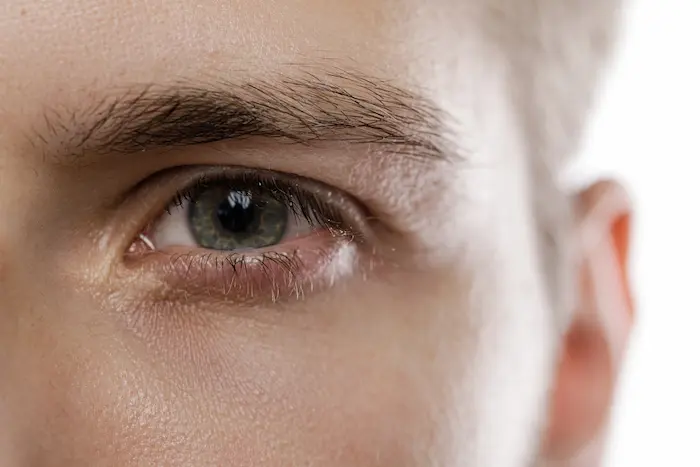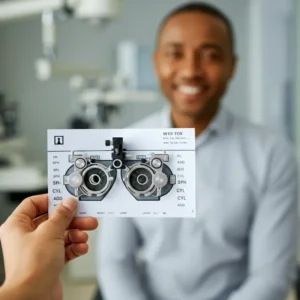Early detection of eye diseases remains a critical challenge in healthcare. However, recent breakthroughs in Quantum Dots Technology for Eye Disease Screening are transforming how we approach ocular diagnostics.
This innovative technology promises to revolutionize the way healthcare providers detect and monitor various eye conditions, potentially saving millions from vision loss through early intervention.
Understanding Quantum Dots and Their Role in Medical Imaging
Quantum dots are microscopic semiconductor particles, typically just a few nanometers in size. These tiny particles possess unique optical and electronic properties that make them ideal for medical imaging applications. When applied to eye disease screening, quantum dots can illuminate specific tissues and cellular structures with unprecedented clarity.
The application of Quantum Dots Technology for Eye Disease Screening represents a significant leap forward from traditional imaging methods. These nanoparticles can be engineered to emit light at specific wavelengths, allowing healthcare providers to detect subtle changes in eye tissue that might otherwise go unnoticed using conventional screening methods.
How Quantum Dots Are Transforming Eye Disease Detection
Quantum Dots Technology: The integration of quantum dots technology into ophthalmology has created new possibilities for early disease detection. Unlike traditional fluorescent markers, quantum dots offer several advantages:
Enhanced Sensitivity: Quantum dots provide brighter and more stable imaging signals, allowing for the detection of disease markers at much lower concentrations than previously possible.
Improved Specificity: These nanoparticles can be precisely targeted to bind with specific molecular markers associated with various eye diseases, reducing false positives and improving diagnostic accuracy.
Prolonged Imaging Time: The exceptional photostability of quantum dots enables longer observation periods, helping healthcare providers conduct more thorough examinations.
Clinical Applications and Current Research
Research institutions worldwide are exploring various applications of Quantum Dots Technology for Eye Disease Screening. Current focus areas include:
Retinal Disease Detection
Scientists have developed quantum dot-based imaging systems that can detect early signs of age-related macular degeneration (AMD) and diabetic retinopathy. These systems provide detailed images of retinal blood vessels and tissue changes before visible symptoms appear.
Glaucoma Monitoring
Innovative applications of quantum dots help visualize pressure changes within the eye, offering new ways to monitor glaucoma progression. This technology enables healthcare providers to track subtle changes in intraocular pressure with greater precision than traditional methods.
Corneal Disease Assessment
The use of biocompatible quantum dots has shown promising results in identifying early corneal diseases. These nanoparticles can highlight subtle changes in corneal tissue structure, enabling earlier intervention.
Safety Considerations and Technological Advancements
While Quantum Dots Technology for Eye Disease Screening shows immense promise, researchers are carefully studying its safety profile. Recent developments have focused on creating biocompatible quantum dots that can be safely used in human subjects. Scientists have made significant progress in developing non-toxic formulations that maintain the same powerful imaging capabilities.
Recent Innovations
New generations of quantum dots feature:
- Enhanced biocompatibility through improved surface coatings
- Reduced toxicity while maintaining optimal optical properties
- Better targeting capabilities for specific eye conditions
- Improved clearance from the body after imaging
Implementation in Clinical Settings
Healthcare facilities are gradually incorporating quantum dots screening technology into their diagnostic protocols. This implementation requires:
Infrastructure Development
Medical centers are investing in specialized equipment and training programs to effectively utilize quantum dot imaging systems. This includes advanced imaging devices and data analysis software.
Healthcare Provider Training
Ophthalmologists and technicians are receiving specialized training to properly utilize quantum dot-based screening methods and interpret the results accurately.
Protocol Development
Healthcare institutions are establishing standardized protocols for quantum dot-based screening procedures to ensure consistent and reliable results across different facilities.
Here you like Five-Minute Chinese Eye Exercise Routine for Beginners: A Step-by-Step Guide
Economic Impact and Accessibility
The adoption of Quantum Dots Technology for Eye Disease Screening is expected to have significant economic implications for healthcare systems worldwide. While initial implementation costs may be high, the long-term benefits include:
- Reduced treatment costs through earlier intervention
- Decreased need for invasive diagnostic procedures
- Lower rates of vision loss and associated disability costs
- Improved patient outcomes and quality of life
Future Prospects and Ongoing Development
Quantum Dots Technology: The future of quantum dots in eye disease screening looks promising. Researchers continue to explore new applications and improvements, including:
- Integration with artificial intelligence for automated disease detection
- Development of more cost-effective production methods
- Expansion into home-based screening solutions
- Creation of portable screening devices for remote areas
Conclusion
Quantum Dots Technology for Eye Disease Screening represents a groundbreaking advancement in ophthalmology. This technology offers unprecedented opportunities for early disease detection, improved patient outcomes, and more efficient healthcare delivery. As research continues and technology evolves, we can expect even more innovative applications and improvements in eye disease screening methods.
Frequently Asked Questions (FAQs)
1. What makes quantum dots different from traditional eye screening methods?
Quantum dots offer superior imaging capabilities with higher sensitivity and specificity compared to traditional fluorescent markers. They provide clearer, longer-lasting images and can be precisely targeted to specific disease markers, enabling earlier and more accurate detection of eye conditions.
2. Are quantum dots safe for use in eye disease screening?
Recent developments have focused on creating biocompatible quantum dots with minimal toxicity. Modern formulations feature improved surface coatings and clearance mechanisms, making them safe for clinical use when administered properly by healthcare professionals.
3. How long does a quantum dot screening procedure take?
A typical screening procedure using quantum dot technology usually takes 20-30 minutes, including preparation time. The actual imaging process is relatively quick, and results can often be analyzed immediately.
4. Will quantum dot screening be covered by insurance?
As this technology becomes more widely adopted, many insurance providers are beginning to cover quantum dot-based screening procedures. Coverage varies by provider and location, so patients should check with their insurance companies for specific details.
5. How often should someone get quantum dot screening for eye diseases?
Quantum Dots Technology. The frequency of screening depends on individual risk factors, age, and existing eye conditions. Generally, annual screening is recommended for high-risk patients, while others might need screening every two to three years. Consult with an eye care professional for personalized recommendations.




